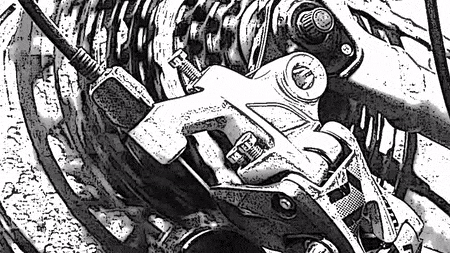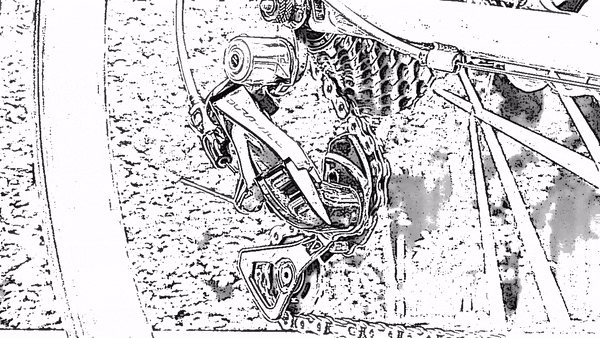Have you noticed that annoying clicking noise while out on a ride? It’s time to stop ignoring it or blaming it on someone else. Let’s get it fixed!
How does a rear derailleur and shifter work?
Mechanical shifters work by pulling the gear cable a small amount which directly relates to the distance between sprockets on the cassette. If the amount that the shifter pulls the cable is effected, for whatever reason, then shift indexing accuracy can be compromised.
How to index your gears.
(This advice is applicable for all mechanical rear derailleurs and shifters / levers from the major manufacturers.)
The barrel adjuster is found where the cable enters the rear derailleur. If your gear shifting has got gradually worse, indexing might be brought back to perfect just through tweaking the barrel adjuster.

With the bike on a stand and chain on the smallest sprocket, turn the cranks and shift up one click on the lever. If the gear is clicking and doesn’t shift sprockets, turn the barrel adjuster anti clockwise until the chain jumps up onto the next sprocket. Change back down a sprocket and shift again, one sprocket. Check the shifting up the cassette through the sprockets and returning back down the cassette.
If indexing is still ‘clicky’ or a bit ‘vague’ when shifting up and down the cassette, even after tweaking with the barrel adjuster, your bike’s gearing could have an issue. Here are the Top 5 common issues which can affect gear indexing;
1 Cable Stretch / Dirty / Dry Cables
Cables stretch over time through regular usage. Minimise this by leaving your bike on the smallest gear (inner ring / smallest sprocket) when not in use. The only cure for stretched cables is to re-index your gears or replace the cables. Dirt from the road and trails finds its way into cable housing and makes operation less smooth and effective. When cables get old and lubrication has dried out, the pull action and spring back gets sticky and slower.
2 Chain / Cassette Worn
If your chain and cassette have been well used and in all-weather conditions, the reason for constantly clicky gears could be a worn cassette. Replace cassette and chain together, a well looked after (cleaned & lubed) cassette should last the same as two chains.
3 Wheel Alignment
Check your bikes rear wheel is properly seated in the rear dropouts of the frame. If the wheel is mounted incorrectly, on an angle for example, this can offset the alignment of the cassette in relation to the rear derailleur.
4 Changed Wheels?
Changing wheel brands could result in your gears needing re-indexing. Different manufacturers can use slightly different positioning of the freehub within the hub spacing.
5 Derailleur Alignment
If your bike has ever toppled over onto gear side, crashed or been badly packed, the rear gear hanger going out of alignment. This can usually be spotted through looking at the cassette and rear gear from the rear of the bike. If the alignment from the sprocket through the rear gear isn’t at 90 degrees to the ground, your bike may have a problem. Luckily, many bikes come with a replacement gear hanger or at worst they are fairly easy to source. It is a relatively simple job to replace a hanger.

Replacing Cables
While it is often possible to get your shifting back on track just with new inner cables, it is better to replace outer cables too. Any dirt that got into the cable between inner and outer, could still be there. This could impact the shifting of the new inner cables. While cables such as Shimano Optislick come ready for action, other may require lubrication, such as Rock N Roll Cable Magic.
Top Tips for replacing derailleur / shifting cables
- Use the old outer cable as a template for trimming the new cable to size
- Route the new cables the same way as the old ones
- Use proper cable cutters for snipping cable to length
- Don’t mix outer gear with outer brake cable. (Brake cables are spiral bound under the plastic casing. Gear cables are linear bound to reduce cable deforming under shift load.)
- If your frame has internally routed cables, check online to see if it has full cable liner routing inside. If it doesn’t, it might be worth allowing a professional mechanic to tease the cable through. It can be a time-consuming and very frustrating process.
Check out our Cables here.
Check out our Tools here.
